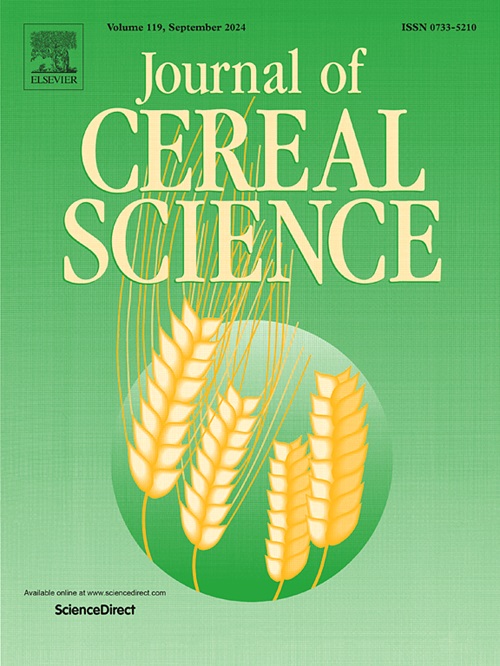Effect of Jiuniang pretreatment on the quality of Tartary buckwheat dough and steamed bread: a focus on the protein of dough and interface properties of dough liquor
IF 3.7
2区 农林科学
Q2 FOOD SCIENCE & TECHNOLOGY
引用次数: 0
Abstract
This study explored the effect of Jiuniang pretreatment (GR group, Jiuniang + rice porridge group; GB group, Jiuniang + bran group; GRB group, Jiuniang + rice porridge + bran group) on the quality of Tartary buckwheat dough and steamed bread. Compared with the G group (untreated group), Jiuniang pretreatment increased the count of lactic acid bacteria (LAB) in Jiuniang liquid. The GB and GRB groups increased the count of molds and yeasts (MY) and the pH in Jiuniang liquid. The fermentation properties of Tartary buckwheat dough with Jiuniang pretreatment were improved, the dough of the GB group had the highest gas production volume, gas retention volume, and dough height (34.75 mm). The glutenin macropolymer (GMP) content of dough in the GB group was higher than that of the G group and the free sulfhydryl content in the GB group was lower than that of other groups. In addition, the GB group increased the water-soluble arabinoxylan content of dough liquor. Compared the G group, the GR and GRB groups improved the interfacial properties of the dough liquor and decreased the protein molecular weight of dough liquor. Jiuniang pretreatment increased the specific volume and reduced the hardness of Tartary buckwheat steamed bread. In conclusion, Jiuniang liquid with Jiuniang pretreatment could be applied to improve the quality of Tartary buckwheat steamed bread.

九娘预处理对苦荞面皮和馒头品质的影响——重点研究了面皮的蛋白质和面液的界面特性
本研究探讨酒娘预处理(GR组、酒娘+米粥组;GB组、九娘+品牌组;GRB组、九酿+米粥+麸皮组)对苦荞面皮和馒头质量的影响。与G组(未处理组)相比,酒娘预处理提高了酒娘液中乳酸菌(LAB)的数量。GB和GRB组增加了酒酿液中霉菌和酵母菌(MY)的数量和pH。酒酿预处理改善了苦荞面团的发酵性能,其中GB组面团产气量、留气量和面团高度最高(34.75 mm)。国标组面团中谷蛋白大聚合物(GMP)含量高于G组,游离巯基含量低于其他各组。此外,GB组提高了面粉液中水溶性阿拉伯木聚糖的含量。与G组相比,GR和GRB组改善了面液的界面性能,降低了面液的蛋白质分子量。九娘预处理提高了苦荞馒头的比容,降低了其硬度。综上所述,九娘液加九娘预处理可用于改善苦荞馒头的品质。
本文章由计算机程序翻译,如有差异,请以英文原文为准。
求助全文
约1分钟内获得全文
求助全文
来源期刊

Journal of Cereal Science
工程技术-食品科技
CiteScore
7.80
自引率
2.60%
发文量
163
审稿时长
38 days
期刊介绍:
The Journal of Cereal Science was established in 1983 to provide an International forum for the publication of original research papers of high standing covering all aspects of cereal science related to the functional and nutritional quality of cereal grains (true cereals - members of the Poaceae family and starchy pseudocereals - members of the Amaranthaceae, Chenopodiaceae and Polygonaceae families) and their products, in relation to the cereals used. The journal also publishes concise and critical review articles appraising the status and future directions of specific areas of cereal science and short communications that present news of important advances in research. The journal aims at topicality and at providing comprehensive coverage of progress in the field.
 求助内容:
求助内容: 应助结果提醒方式:
应助结果提醒方式:


